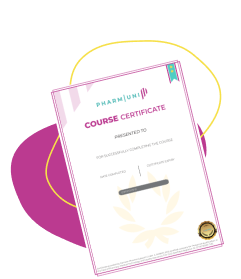Validated Systems in Pharma
Definition
In the pharmaceutical industry, a validated system refers to any computerized or automated system that has been thoroughly tested and documented to demonstrate that it consistently performs according to predetermined specifications and quality attributes. Validated systems are essential for ensuring data integrity, product quality, and regulatory compliance.
These systems must be validated according to Good Automated Manufacturing Practice (GAMP) guidelines and regulatory requirements such as those from the FDA (21 CFR Part 11) and the European Medicines Agency (EMA).
Detailed Explanation
What Is a Validated System in Pharma?
A validated system in pharma is typically a software or hardware system used in manufacturing, quality control, clinical trials, or data management that has undergone a formal process of validation. The validation process ensures the system operates reliably and as intended in its specific environment. This is a requirement under Good Manufacturing Practice (GMP) regulations.
Purpose and Importance
Validated systems are critical for:
- Regulatory Compliance: Meeting FDA, EMA, and other regulatory standards.
- Product Quality: Ensuring consistent production and testing of pharmaceutical products.
- Data Integrity: Maintaining accurate, secure, and traceable records.
- Risk Management: Reducing the risk of system failures that could impact patient safety or product efficacy.
Examples of Validated Systems
Examples of validated systems in the pharmaceutical industry include:
- Laboratory Information Management Systems (LIMS) – used to manage laboratory data and workflows.
- Manufacturing Execution Systems (MES) – used to track and document the transformation of raw materials into finished goods.
- Enterprise Resource Planning (ERP) Systems – used for managing business processes, including supply chain and inventory control.
- Computerized Maintenance Management Systems (CMMS) – used to schedule and document equipment maintenance.
Validation Lifecycle
The validation of systems typically follows a structured lifecycle approach, such as:
- User Requirements Specification (URS): Defines what the user expects the system to do.
- Functional Specifications (FS): Describes how the system will meet the requirements.
- Design Qualification (DQ): Verifies the system design meets requirements.
- Installation Qualification (IQ): Confirms the system is installed correctly.
- Operational Qualification (OQ): Tests the system’s functions under expected conditions.
- Performance Qualification (PQ): Demonstrates the system performs effectively in the production environment.
Regulatory Requirements
Validated systems must comply with various international regulations, including:
- 21 CFR Part 11 (FDA): Governs electronic records and electronic signatures.
- EU Annex 11: European guideline for computerized systems in GMP environments.
- ICH Q9: Provides guidance on quality risk management.
Best Practices for Maintaining Validated Systems
Maintaining a validated state requires:
- Change control processes for any system updates or modifications.
- Periodic review and revalidation as necessary.
- Comprehensive documentation and audit trails.
- Training for personnel using or maintaining the system.
Why Validated Systems Matter
Validated systems in pharma are not just about compliance—they are about trust. Patients, healthcare providers, and regulatory bodies rely on pharmaceutical companies to deliver safe and effective products. Without validated systems, the integrity of data and processes could be compromised, leading to costly recalls, regulatory penalties, or worse—harm to patients.



